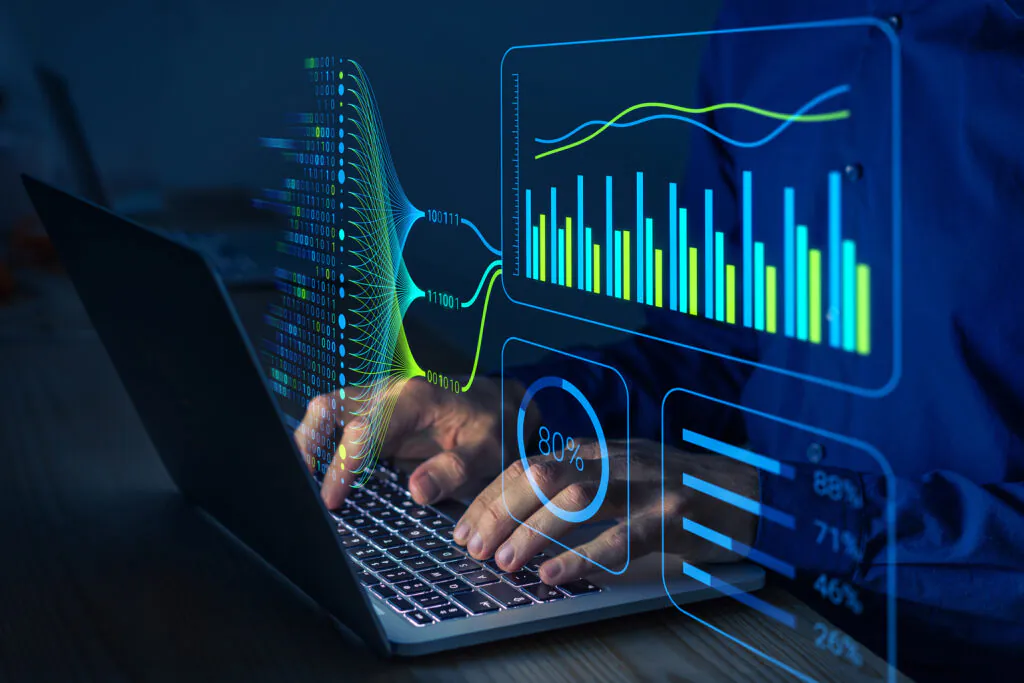In the food and beverage industry, pricing analytics helps manufacturers to make strategic business decisions based on dynamic pricing insights. Food and beverage manufacturers leverage big data to gain an in-depth understanding of the internal and external market factors that affect its overall profitability of the organization. Automation tools such as pricing analytics help the food manufacturers to answer the why of consumer behavior by identifying and analyzing the customer buying patterns. With technological advancements, the increasing popularity of big data, and the ever-changing market dynamics, food businesses are avoiding their traditional price strategies and leveraging advanced analytical services to ensure a personalized and seamless shopping experience for their target customers.
Book a demo to experience the meaningful insights we derive from data through our analytical tools and platform capabilities. Schedule a demo today!
Request a free demoTable of Contents
“Why Adopt This Tool?” Asks The Food and Beverage Industry
- This industry across the globe is highly competitive in nature owing to non-existent market entry-exit barriers. This drives the manufacturers to rely on pricing analytics solutions that improve profitability and expand their market share by devising effective strong methodology and research in price. Big data analytic services offer access to real-time market data, helps predict customer behavior, drive price optimization, and facilitates effective marketing campaigns.
- Big data solutions allow manufacturers and retailers to monitor the competitive landscape, understand their competitor’s data-driven restaurant strategy, and create a competitive advantage. A precise strategy requires a comprehensive understanding of inventory management systems, including records of purchase prices, delivery fees, waste, and spoilage. For example, by analyzing this data, one business owner can identify baseline suppliers and implement bulk purchasing strategies to improve profit margins. Moreover, data-driven solutions enable businesses to leverage rich customer data, store tiering, and advanced analytical techniques to develop precise strategies.
- This tool has a potential impact in this industry, helping businesses make more informed decisions about their menu items, menu planning, portion sizes, and strategies. By utilizing data and insight-driven approaches, restaurants and catering companies can optimize their menu development and planning processes. This involves considering factors such as ingredient percentages, overall sales, revenues, and portion sizes to determine the most profitable menu price strategies. The ultimate goal of this tool is to improve overall profitability. By considering factors such as guest count, value meals, price points, and store tiering, businesses can optimize their strategies to increase ticket size and drive revenue. Utilizing analytic tools and price simulators, businesses can continuously improve their strategies and ensure the long-term success of their organization.
Quantzig offers three reasons why organizations should adopt pricing analytics which are as follows-
- Maintaining a balance between supply and demand by optimizing pricing strategies to maximize margins
- Enhancing product and channel mix by determining capacity utilization and forecasting product demand and inventory requirements
- Identify the potential risk factors and devise risk mitigation strategies to eliminate potential losses
The Importance of Food Pricing Analytics
Food pricing analytics helps organizations gain a deeper understanding of the factors impacting pricing, from supply chain variables to customer purchasing behavior. With advanced analytics tools and techniques, businesses can identify key trends, evaluate customer price sensitivity, and respond to market shifts in real time. The primary goals of pricing analytics are to:
Maximize Revenue: By identifying optimal price points, businesses can set prices that align with consumer demand while maximizing revenue.
Enhance Profit Margins: Advanced analytics allows companies to detect underperforming products, inefficient pricing, and other profit drains, empowering them to adjust pricing strategies effectively.
Stay Competitive: As competitors continuously adjust prices, food pricing analytics enables companies to respond strategically, staying competitive without sacrificing profit margins.
The use of this tool
- In the dynamic landscape of the food and beverage industry, success hinges on the strategic utilization of cutting-edge tools and methodologies. As market players strive for supremacy, the role of price analytic tools emerges as the linchpin for sustainable growth and competitive advantage. In this fiercely contested arena, where every penny counts, leveraging advanced price analytics becomes imperative.
- From optimizing product price to deciphering consumer behavior, and from mitigating risks to seizing market opportunities, this tool stands as the undisputed catalyst for informed decision-making. Unleashing the power of data-driven insights, businesses can navigate the intricate price dynamics of this sector, gaining an unparalleled edge in the relentless pursuit of market dominance. In this high-stakes game, where margins define success, food pricing analytics emerges not merely as a tool but as the cornerstone for unparalleled competitiveness in this sector.
So, don’t wait! Elevate your strategy, outpace your rivals, and redefine success in this challenging market environment. The future belongs to those who leverage this tool to its fullest potential – act now and position your business at the forefront of industry excellence!
Experience the advantages firsthand by testing a customized complimentary pilot designed to address your specific requirements. Pilot studies are non-committal in nature.
Request a free pilotSteps:
Step 1: Identify your competitors
- The initial step in conducting a competitive analysis involves identifying your competitors. This entails finding companies that offer similar products or services to yours and cater to the same target market. You may have already identified your competitors, in which case you would proceed to categorize them. Direct competitors are those that offer the same products or services as you, while indirect competitors offer similar offerings but target a different market.
- Primary competitors serve the same audience as your business, while secondary competitors provide either high-end or low-end versions of your product assortment. Tertiary competitors serve the same target audience but offer related products or services, potentially becoming business partners or future competitors if they expand. Categorizing competitors allows businesses to prioritize the analysis of direct competitors, a crucial step in competitor analysis.
- Secondary competition can also be considered in the long term, and businesses should be prepared to partner with or compete against tertiary counterparts. For retailers with a small number of SKUs, manually organizing competitors may be feasible, but large sellers with numerous products across multiple pricing zones would benefit from an intelligent competitor analysis. Additionally, the market environment for each product is subject to change as other retailers adjust their strategies and new competitors enter the market. Therefore, recurring competitive price analysis and categorization are necessary processes that depend on the product type or market segment.
Step 2: Analyze data quality and gather relevant data
To begin gathering competitive data, the next step is to define the relevant parameters. Here are some aspects you can consider as a starting point:
1. Product availability: Analyzing the availability of competitors’ stocks is essential for price strategies. By understanding the supply of the product category, you can set your prices to maximize revenue or profits.
2. Competitor’s additional offers: It is crucial to stay on par with your competitors’ offers. Tracking discounts, promo codes, and other recommendations will help you introduce attractive offers that appeal to your target audience. However, the relevance of this aspect depends on your product assortment.
3. Price index: This aspect involves monitoring your company’s market position for a specific product category or service over a period of time.
As mentioned earlier, you can collect data by visiting competitors’ websites and physical stores or by purchasing their products. Alternatively, you can utilize price tracking platforms that provide real-time updates on competitors’ prices. Regularly gathering accurate data is essential to create an effective competitor analysis strategy and ensure you have the most up-to-date information.
Step 3: In-depth analysis of data
After collecting all the data, you should look into the trends and patterns in the data. It will help you know how your competitors are making their strategies to stand out from the crowd. For example, are your competitors are providing any offers and discount? look for the weakness and strengths of your competitors.
What we offer?
Quantzig’s cutting-edge pricing analytics solution for the fast-food industry stands as a paradigm of excellence, revolutionizing strategic decision-making in this dynamic sector. Leveraging state-of-the-art algorithms and advanced data, our experts empower fast-food enterprises to optimize product price, enhance profit margins, and gain invaluable insights into consumer behavior.
With a meticulous focus on dynamic market conditions, our food pricing analytics platform enables businesses to navigate the complexities of price strategies and accurately calculate cost control measures, ensuring a competitive edge in this fast-paced industry. By seamlessly integrating key performance indicators, market trends, and consumer preferences, our solution goes beyond traditional methodologies, offering a comprehensive and tailored approach to price optimization.
Get started with your complimentary trial today and delve into our platform without any obligations. Explore our wide range of customized, consumption driven analytical solutions services built across the analytical maturity levels.
Start your free trialThings to Keep in Mind

This tool ensures seamless integration of business processes by effortlessly executing pricing and quotation activities for the food manufacturer. Manufacturers in this industry must integrate their existing systems and business practices with business-enabling technology and food cost analysis that offers clear market visibility, forecasts the shifts in market conditions, and in-depth insights into the dynamic market landscape. The key to success in this competitive market is to be agile, adaptive, and responsive in nature to ensure profitability and improve customer satisfaction.
To implement this tool successfully, a 4-month project is recommended. This project involves identifying critical processes, evaluating internal price infrastructure, and conducting deep analytic solution dives using competitive and transactional data. By quantifying store elasticity and product demand, businesses can gain insights into market basket purchase behaviors and competitive positioning. This information can then be used to redesign the strategy and make price recommendations at the product, category, and store levels.
Conclusion
In conclusion, the pivotal role of this tool cannot be overstated, and businesses must harness its transformative potential to secure a competitive advantage. Embracing advanced analytic solutions is not just a strategic imperative but a decisive factor in navigating the intricacies of this fiercely competitive landscape. By leveraging data-driven insights, businesses can meticulously optimize product price, mitigate risks, and capitalize on emerging market opportunities. It is a vital component of this industry. By leveraging data-driven approaches, businesses can make informed decisions about menu development, portion sizes, and price strategies. This enables them to optimize profitability, enhance customer satisfaction, and stay competitive in the market.
Quantzig, as a leading player in this domain, exemplifies excellence with its state-of-the-art pricing analytics platform, empowering enterprises to stay ahead of the curve. With a keen focus on maximizing profitability and enhancing decision-making precision, our solution enables businesses to thrive in this ever-evolving sector. To thrive in this competitive environment, embracing price analytic solution is not just an option; it is a strategic imperative for businesses seeking sustainable growth, operational efficiency, and a dominant position in the market.




